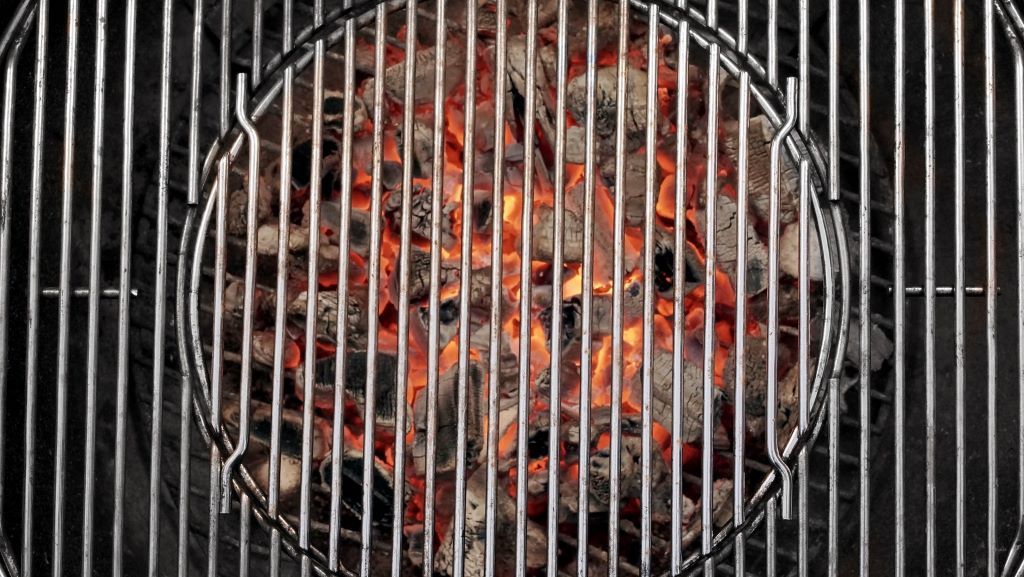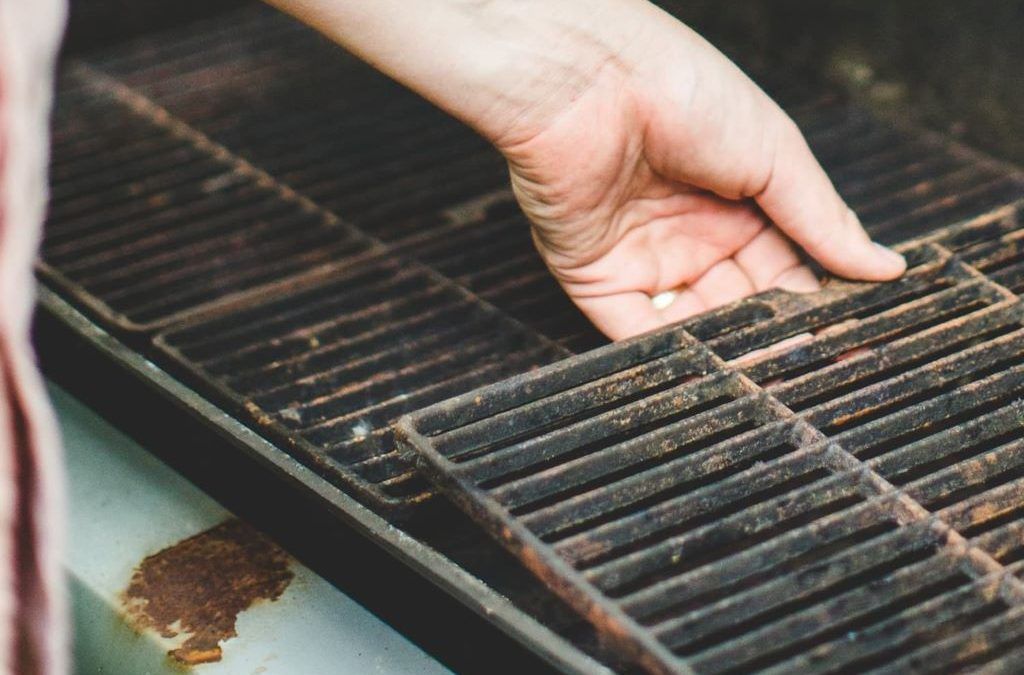The Scorched Truth: How Often Should You Replace Your Grill Grates?

The Art and Science of Grilled Perfection: Knowing When Your Meat is Perfectly Cooked
April 28, 2025
The Scorching Showdown: Direct vs. Indirect Grilling – Mastering the Art of Fire and Flavor
April 28, 2025The sizzle of a steak, the char on a burger, the smoky aroma of grilled vegetables – these are the hallmarks of backyard culinary mastery. But behind every perfect sear lies a crucial, often overlooked component: the grill grate. Like the unsung hero of your outdoor kitchen, the grate endures scorching temperatures, greasy residues, and the relentless assault of the elements. However, just like any hardworking tool, grill grates wear down over time, impacting both the quality of your food and the safety of your grilling experience. So, how often should you replace your grill grates? The answer, as with most things in life, is nuanced and depends on a variety of factors.
Understanding the Grate Game: Materials and Their Lifespan
The lifespan of your grill grates hinges primarily on the material they’re made from. Each material boasts unique properties that influence its durability and resistance to wear and tear.
- Porcelain-Coated Cast Iron: These grates are popular for their excellent heat retention and even cooking. The porcelain coating provides a non-stick surface and protects the cast iron from rust. However, this coating is susceptible to chipping and cracking, especially when exposed to rapid temperature changes or harsh cleaning tools. Once the coating is compromised, the cast iron underneath is vulnerable to rust. With proper care, porcelain-coated cast iron grates can last 3-5 years, but damaged coatings can significantly shorten their lifespan.
- Cast Iron (Uncoated): Uncoated cast iron grates are prized for their superior heat retention and ability to develop a natural, non-stick seasoning over time. They are incredibly durable but require regular maintenance to prevent rusting. Seasoning, much like a cast iron skillet, is crucial. If maintained properly, these grates can last for decades, even a lifetime. However, neglect or improper care can lead to rust and premature deterioration.
- Stainless Steel: Stainless steel grates are known for their corrosion resistance and durability. They are less prone to rusting than cast iron and require minimal maintenance. However, they may not retain heat as well as cast iron and can be more expensive. High-quality stainless steel grates can easily last 5-10 years, and sometimes even longer, depending on the grade of steel.
- Chrome-Plated Steel: These are often found on less expensive grills. They offer a smooth surface and are easy to clean, but they are the least durable option. The chrome plating can chip or peel, exposing the underlying steel to rust. These grates typically need replacing every 1-3 years, or even sooner if they are frequently used.
The Grilling Gauntlet: Factors Affecting Grate Longevity
Beyond the material, several other factors contribute to the wear and tear of your grill grates.
- Frequency of Use: Frequent grilling exposes grates to higher temperatures and more grease buildup, accelerating their deterioration. A grill used multiple times a week will likely require grate replacement sooner than one used occasionally.
- Cleaning Habits: Proper cleaning is essential for maintaining grate longevity. Regular cleaning removes grease and food debris, preventing corrosion and buildup that can lead to uneven heating and sticking. Harsh cleaning tools and abrasive chemicals can damage the surface of the grates, especially porcelain-coated ones.
- Weather Conditions: Exposure to rain, humidity, and extreme temperature fluctuations can accelerate rust and corrosion. Grills left uncovered or stored in damp environments are more susceptible to grate damage.
- Grill Temperature: High-temperature grilling, especially searing, can put significant stress on the grates, leading to warping and cracking over time.
- Food Acidity: Highly acidic marinades or foods can contribute to corrosion, particularly on uncoated cast iron or damaged porcelain-coated grates.
Signs It’s Time for a Grate Replacement

Identifying the signs of worn-out grill grates is crucial for maintaining optimal grilling performance and ensuring food safety.
- Rust and Corrosion: Visible rust or corrosion is a clear indication that the grates need replacing. Rust can flake off and contaminate food, posing a health hazard.
- Cracks and Warping: Cracked or warped grates can lead to uneven heating and difficulty in achieving a consistent sear. They can also create hot spots and cold spots, resulting in unevenly cooked food.
- Damaged Coating: Chipped or cracked porcelain coating exposes the underlying cast iron to rust and reduces the non-stick properties of the grate.
- Excessive Sticking: If food consistently sticks to the grates, even after thorough cleaning and seasoning, it may indicate that the surface is damaged and needs replacing.
- Uneven Heating: If you notice significant variations in cooking temperature across the grill surface, it could be a sign of damaged or warped grates affecting heat distribution.
- Visible Wear and Tear: General signs of wear and tear, such as pitting, flaking, or a rough texture, are indicators that the grates are nearing the end of their lifespan.
Extending the Life of Your Grill Grates: Maintenance Matters
While replacement is inevitable, proper maintenance can significantly extend the lifespan of your grill grates.
- Regular Cleaning: Clean your grates after each use to remove grease and food debris. Use a grill brush or scraper to remove stuck-on food. For stubborn residue, use a grill-safe cleaning solution.
- Seasoning (For Cast Iron): Season uncoated cast iron grates regularly with a high-heat cooking oil, such as canola or grapeseed oil. This creates a natural non-stick surface and protects against rust.
- Proper Storage: Store your grill in a dry, covered area to protect it from the elements. A grill cover is essential for preventing rust and corrosion.
- Gentle Cleaning Tools: Avoid using abrasive cleaning tools or harsh chemicals that can damage the surface of the grates, especially porcelain-coated ones.
- Preheating and Cooling: Allow your grill to preheat fully before cooking and let the grates cool completely before cleaning. Rapid temperature changes can cause warping and cracking.
- Oil Application: Before grilling, lightly oil the grates to prevent food from sticking. Use a high-heat cooking oil and apply it with a paper towel or spray bottle.
Sanyo HPS-SG2 Indoor Barbeque Grill: Grill fast, easy and healthy
People Also Ask (FAQs)
-
Can I clean rusty grill grates?
- Yes, you can clean rusty grill grates, but it depends on the severity of the rust. For light rust, use a wire brush or steel wool to remove the rust and then season the grates with oil. For heavy rust, soak the grates in a vinegar solution or use a rust remover. However, if the rust is extensive or the grates are significantly damaged, replacement is recommended.
-
What is the best way to clean grill grates?
- The best way to clean grill grates is to preheat the grill on high for 10-15 minutes to burn off any food residue. Then, use a grill brush or scraper to remove the remaining debris. For stubborn residue, use a grill-safe cleaning solution or a mixture of baking soda and water.
-
Can I use oven cleaner on grill grates?
- Yes, you can use oven cleaner on grill grates, but it’s essential to use a grill-safe oven cleaner and follow the manufacturer’s instructions carefully. Rinse the grates thoroughly with water after cleaning to remove any residue.
-
How do I prevent food from sticking to my grill grates?
- To prevent food from sticking to your grill grates, ensure they are clean and well-seasoned. Lightly oil the grates before grilling and preheat the grill to the appropriate temperature.
-
Are stainless steel grill grates better than cast iron?
- Both stainless steel and cast iron grill grates have their advantages. Cast iron grates offer superior heat retention and develop a natural non-stick seasoning, while stainless steel grates are more corrosion-resistant and require less maintenance. The best choice depends on your grilling preferences and needs.
Conclusion: Grilling with Confidence
Knowing when to replace your grill grates is essential for maintaining optimal grilling performance, ensuring food safety, and prolonging the life of your grill. By understanding the factors that contribute to grate wear and tear, recognizing the signs of damage, and practicing proper maintenance, you can maximize the lifespan of your grates and enjoy countless delicious grilled meals. Ultimately, replacement frequency depends on the quality of the grates, how often you grill, and the level of care you give your grill. When in doubt, if your grates show any signs of rust, damage, or excessive wear, replace them. This will ensure that your grilling experiences remain safe, enjoyable, and delicious for years to come. Replace your grates, and keep on grilling!
Read More:
How to clean cast iron barbeque grill?




